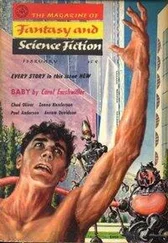Oliver Sacks - The man who mistook his wife for a hat
Здесь есть возможность читать онлайн «Oliver Sacks - The man who mistook his wife for a hat» весь текст электронной книги совершенно бесплатно (целиком полную версию без сокращений). В некоторых случаях можно слушать аудио, скачать через торрент в формате fb2 и присутствует краткое содержание. Жанр: Психология, на английском языке. Описание произведения, (предисловие) а так же отзывы посетителей доступны на портале библиотеки ЛибКат.
- Название:The man who mistook his wife for a hat
- Автор:
- Жанр:
- Год:неизвестен
- ISBN:нет данных
- Рейтинг книги:5 / 5. Голосов: 1
-
Избранное:Добавить в избранное
- Отзывы:
-
Ваша оценка:
- 100
- 1
- 2
- 3
- 4
- 5
The man who mistook his wife for a hat: краткое содержание, описание и аннотация
Предлагаем к чтению аннотацию, описание, краткое содержание или предисловие (зависит от того, что написал сам автор книги «The man who mistook his wife for a hat»). Если вы не нашли необходимую информацию о книге — напишите в комментариях, мы постараемся отыскать её.
The man who mistook his wife for a hat — читать онлайн бесплатно полную книгу (весь текст) целиком
Ниже представлен текст книги, разбитый по страницам. Система сохранения места последней прочитанной страницы, позволяет с удобством читать онлайн бесплатно книгу «The man who mistook his wife for a hat», без необходимости каждый раз заново искать на чём Вы остановились. Поставьте закладку, и сможете в любой момент перейти на страницу, на которой закончили чтение.
Интервал:
Закладка:
Eight of the chapters in this book have already been published: 'The Lost Mariner', 'Hands', 'The Twins', and 'The Autist Artist' in the New York Review of Books (1984 and 1985), and 'Witty Ticcy Ray', 'The Man Who Mistook His Wife for a Hat', and 'Reminiscence' in the London Review of Books (1981, 1983, 1984)- where the briefer version of the last was called 'Musical Ears'. 'On the Level' was published in The Sciences (1985). A very early account of one of my patients-the 'original' of Rose R. in Awakenings and of Harold Pinter's Deborah in A Kind of Alaska, inspired by that book-is to be found in 'Incontinent Nostalgia' (originally published as 'Incontinent Nostalgia Induced by L-Dopa' in the Lancet of Spring 1970). Of my four 'Phantoms', the first two were published as 'clinical curios' in the British Medical journal (1984). Two short pieces are taken from previous books: 'The Man Who Fell out of Bed' is excerpted from A Leg to Stand On, and 'The Visions of Hildegard' from Migraine. The remaining twelve pieces are unpublished and entirely new, and were all written during the autumn and winter of 1984.
I owe a very special debt to my editors: first to Robert Silvers of the New York Review of Books and Mary-Kay Wilmers of the London Review of Books; then to Kate Edgar, Jim Silberman of
Summit Rooks in New York, and Colin Haycraft of Duckworth's
in London, who between them did so much to shape the final
book.
Among my fellow neurologists I must express special gratitude to the late Dr James Purdon Martin, to whom I showed videotapes of 'Christina' and 'Mr MacGregor' and with whom I discussed these patients fully-'The Disembodied Lady' and 'On the Level' express this indebtedness; to Dr Michael Kremer, my former 'chief in London, who in response to A Leg to Stand On (1984) described a very similar case of his own-these are bracketed together now in 'The Man Who Fell out of Bed'; to Dr Donald Macrae, whose extraordinary case of visual agnosia, almost comically similar to my own, was only discovered, by accident, two years after I had written my own piece-it is excerpted in a postscript to 'The Man Who Mistook His Wife for a Hat'; and, most especially, to my close friend and colleague, Dr Isabelle Rapin, in New York, who discussed many cases with me; she introduced me to Christina (the 'disembodied lady'), and had known Jose, the 'autist artist', for many years when he was a child.
I wish to acknowledge the selfless help and generosity of the patients (and, in some cases, the relatives of the patients) whose tales I tell here-who, knowing (as they often did) that they themselves might not be able to be helped directly, yet permitted, even encouraged, me to write of their lives, in the hope that others might learn and understand, and, one day, perhaps be able to cure. As in Awakenings, names and some circumstantial details have been changed for reasons of personal and professional confidence, but my aim has been to preserve the essential 'feeling' of their lives.
Finally, I wish to express my gratitude-more than gratitude- to my own mentor and physician, to whom I dedicate this book.
New York O.W.S.
To talk of diseases is a sort of Arabian Nights entertainment.
–William Osler
The physician is concerned [unlike the naturalist] . . . with a single organism, the human subject, striving to preserve its identity in adverse circumstances.
–Ivy McKenzie
PART ONE
LOSSES
Introduction
Neurology's favourite word is 'deficit', denoting an impairment or incapacity of neurological function: loss of speech, loss of language, loss of memory, loss of vision, loss of dexterity, loss of identity and myriad other lacks and losses of specific functions (or faculties). For all of these dysfunctions (another favourite term), we have privative words of every sort-Aphonia, Aphemia, Aphasia, Alexia, Apraxia, Agnosia, Amnesia, Ataxia-a word for every specific neural or mental function of which patients, through disease, or injury, or failure to develop, may find themselves partly or wholly deprived.
The scientific study of the relationship between brain and mind began in 1861, when Broca, in France, found that specific difficulties in the expressive use of speech, aphasia, consistently followed damage to a particular portion of the left hemisphere of the brain. This opened the way to a cerebral neurology, which made it possible, over the decades, to 'map' the human brain, ascribing specific powers-linguistic, intellectual, perceptual, etc.-to equally specific 'centres' in the brain. Toward the end of the century it became evident to more acute observers-above all to Freud, in his book Aphasia -that this sort of mapping was too simple, that all mental performances had an intricate internal structure, and must have an equally complex physiological basis. Freud felt this, especially, in regard to certain disorders of recognition and perception, for which he coined the term 'agnosia'. All adequate understanding of aphasia or agnosia would, he believed, require a new, more sophisticated science.
The new science of brain/mind which Freud envisaged came into being in the Second World War, in Russia, as the joint creation of A. R. Luria (and his father, R. A. Luria), Leontev, Anokhin, Bernstein and others, and was called by them 'neuropsychology.' The development of this immensely fruitful science was the lifework of A. R. Luria, and considering its revolutionary importance it was somewhat slow in reaching the West. It was set out, systematically, in a monumental book, Higher Cortical Functions in Man (Eng. tr. 1966) and, in a wholly different way, in a biography or 'pathography'- The Man with a Shattered World (Eng. tr. 1972). Although these books were almost perfect in their way, there was a whole realm which Luria had not touched. Higher Cortical Functions in Man treated only those functions which appertained to the left hemisphere of the brain; similarly, Zazetsky, subject of The Man with a Shattered World, had a huge lesion in the left hemisphere-the right was intact. Indeed, the entire history of neurology and neuropsychology can be seen as a history of the investigation of the left hemisphere.
One important reason for the neglect of the right, or 'minor', hemisphere, as it has always been called, is that while it is easy to demonstrate the effects of variously located lesions on the left side, the corresponding syndromes of the right hemisphere are much less distinct. It was presumed, usually contemptuously, to be more 'primitive' than the left, the latter being seen as the unique flower of human evolution. And in a sense this is correct: the left hemisphere is more sophisticated and specialised, a very late outgrowth of the primate, and especially the hominid, brain. On the other hand, it is the right hemisphere which controls the crucial powers of recognising reality which every living creature must have in order to survive. The left hemisphere, like a computer tacked onto the basic creatural brain, is designed for programs and schematics; and classical neurology was more concerned with schematics than with reality, so that when, at last, some of the right-hemisphere syndromes emerged, they were considered bizarre.
There had been attempts in the past-for example, by Anton in the 1890s and Potzl in 1928-to explore right-hemisphere syndromes, but these attempts themselves had been bizarrely ignored.
In The Working Brain, one of his last books, Luria devoted a short but tantalising section to right-hemisphere syndromes, ending:
These still completely unstudied defects lead us to one of the most fundamental problems-to the role of the right hemisphere in direct consciousness. . . . The study of this highly important field has been so far neglected. … It will receive a detailed analysis in a special series of papers … in preparation for publication.
Читать дальшеИнтервал:
Закладка:
Похожие книги на «The man who mistook his wife for a hat»
Представляем Вашему вниманию похожие книги на «The man who mistook his wife for a hat» списком для выбора. Мы отобрали схожую по названию и смыслу литературу в надежде предоставить читателям больше вариантов отыскать новые, интересные, ещё непрочитанные произведения.
Обсуждение, отзывы о книге «The man who mistook his wife for a hat» и просто собственные мнения читателей. Оставьте ваши комментарии, напишите, что Вы думаете о произведении, его смысле или главных героях. Укажите что конкретно понравилось, а что нет, и почему Вы так считаете.












